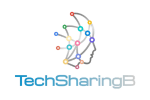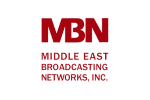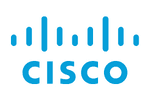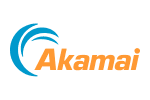PREPARE FOR THE NEW CCNA 200-301 Exam
- Learn from Industry Experts and boost your Computer Networking
Career. - Feel confident about networking concepts like never before.
- Get hired by the top companies
Start your journey with us now!
Book a Live Class, For Free!

Limited Seats Left
Learn the SprintGrad way!

Multiple Language
Support

Up-To-Date
Syllabus

Hands On
Experience

Get Certified

Live Classes by Industry Experts

Interactive Study Material
Benefits of CCNA
- Very good starting point for a career in
networking: Cisco is a leading provider of
networking equipment and solutions globally. - Enhanced Networking Knowledge: CCNA
certification provides a comprehensive
understanding of networking concepts,
protocols, and technologies. - Increased Job Opportunities: Many
organizations value CCNA certification when
hiring network professionals. - Career Advancement: CCNA certification can
significantly boost your career prospects. It
validates your expertise and demonstrates your
commitment to continuous learning in the
networking field.
Curriculum
Network Fundamentals
Network Access
IP Connectivity
IP Services
Security Fundamentals
Automation & Programmability
Network Fundamentals
- Network Components You will learn about the roles and functions of network components.
- Network Topology ArchitectureYou will understand the characteristics of network topology architectures.
- Compare TCP to UDPLearn the difference between these two Internet protocols.
- IPv4 and IPv6 AddressingConfigure and verify IPv4 addressing and subnetting.
- Compare IPv6 Address TypesGlobal unicast, Unique local, Link-local, Anycast, Multicast, and Modified EUI 64.
- Switching Understand switching concepts.
Network Access
- Multiple switches Configure and verify VLANs spanning multiple switches.
- Spanning Tree Protocol (STP)Understand the need for Rapid PVST+ Spanning Tree Protocol and identify its basic operations.
- WLANUnderstand physical infrastructure connections of WLAN components.
IP Connectivity
- Routing Table Interpret the components of a routing table.
- RouterDetermine how a router decides by default.
- Static RoutingLearn to configure and verify IPv4 and IPv6 static routing.
- OSPF (v2)Configure and verify single area OSPF (v2).
IP Services
- Network Address Translation (NAT) Learn to configure and verify inside source NAT using static and pools.
- Network Time Protocol (NTP)Learn to configure and verify NTP operating in client and server mode.
- DHCP and DNSLearn the difference between the role of (Dynamic Host Configuration Protocol) DHCP and (Domain Name System) DNS within the network.
- SNMP and SyslogExplain functions of SNMP in network operations and the use of Syslog features.
- Per-Hop Behavior (PHB)Explain the forwarding PHB for QoS.
- TFTP/ FTPExplain the functions of TFTP and FTP in a network.
Security Fundamentals
- Key Security Concepts Threats, Vulnerabilities, Exploits, and Mitigation techniques.
- Security Program ElementsDescribe the Security Program Elements.
- Virtual Private Networks (VPNs)Define remote access and site-to-site VPNs.
- Security FeaturesConfigure Layer 2 security features.
- Wireless Security ProtocolsDescribe wireless security protocols.
- WLANLearn configuring WLAN.
Automation & Programmability
- Network ManagementExplain how automation impacts network management.
- Controller-based and Software-defined architecturesLearn to distinguish between controller-based and software-defined architectures (overlay, underlay & fabric).
- Device ManagementLearn to compare traditional campus device management with Cisco DNA Center.
- REST-based APIsDescribe the characteristics of REST-based APIs.
- Configuration ManagementRecognize the capabilities of configuration management mechanisms.
- JSON (JavaScript Object Notation)Interpret JSON encoded data.
- Network Components You will learn about the roles and functions of network components.
- Network Topology Architecture You will understand the characteristics of network topology architectures.
- Compare TCP to UDP Learn the difference between these two Internet protocols.
- IPv4 and IPv6 Addressing Configure and verify IPv4 addressing and subnetting.
- Compare IPv6 Address Types Global unicast, Unique local, Link-local, Anycast, Multicast, and Modified EUI 64.
- Switching Understand switching concepts.
- Multiple switches Configure and verify VLANs spanning multiple switches.
- Spanning Tree Protocol (STP) Understand the need for Rapid PVST+ Spanning Tree Protocol and identify its basic operations.
- WLAN Understand physical infrastructure connections of WLAN components.
- Routing Table Interpret the components of a routing table.
- Router Determine how a router decides by default.
- Static Routing Learn to configure and verify IPv4 and IPv6 static routing.
- OSPF (v2) Configure and verify single area OSPF (v2).
- Network Address Translation (NAT) Learn to configure and verify inside source NAT using static and pools.
- Network Time Protocol (NTP) Learn to configure and verify NTP operating in client and server mode.
- DHCP and DNS Learn the difference between the role of (Dynamic Host Configuration Protocol) DHCP and (Domain Name System) DNS within the network.
- SNMP and Syslog Explain functions of SNMP in network operations and the use of Syslog features.
- Per-Hop Behavior (PHB) Explain the forwarding PHB for QoS.
- TFTP/ FTP Explain the functions of TFTP and FTP in a network.
- Key Security Concepts Threats, Vulnerabilities, Exploits, and Mitigation techniques.
- Security Program Elements Describe the Security Program Elements.
- Virtual Private Networks (VPNs) Define remote access and site-to-site VPNs.
- Security Features Configure Layer 2 security features.
- Wireless Security Protocols Describe wireless security protocols.
- WLAN Learn configuring WLAN.
- Network Management Explain how automation impacts network management.
- Controller-based and Software-defined architectures Learn to distinguish between controller-based and software-defined architectures (overlay, underlay & fabric).
- Device Management Learn to compare traditional campus device management with Cisco DNA Center.
- REST-based APIs Describe the characteristics of REST-based APIs.
- Configuration Management Recognize the capabilities of configuration management mechanisms.
- JSON (JavaScript Object Notation) Interpret JSON encoded data.
Training Plan
CCNA Training Fee and Duration
Track | Regular Track | Weekend (Sat & Sun) |
|---|---|---|
Duration | 40-45 Days | 8 Weekends |
Hours | 2 Hours a Day | 3 Hours a Day |
Training Mode | Online | Online |
Know Your Mentor

Apoorv Dabral
Ex CISCO
- CCIE certified industry expert.
- Have taught more than 10K students in his teaching tenure.
- Extensive veteran experience in the computer networking
field, spanning various domains such as enterprise
networking, data center networking, service provider
networks, virtualization and network security. - Have tested and delivered features like MACSec, Segment Routing, BGP Inter AS solutions, Openconfig(RPC), DHCPv6 and more in Computer Networking device’s Operating Systems.
- Have also been in technical support roles wherein has resolved several escalations for customers like Jio, Wipro, Infosys, TCS, Meta, Google and many more.
Experiences Shared by our Enthusiastic Learners













Know more About CCNA
What is CCNA
CCNA, which stands for Cisco Certified Network Associate, is a certification program offered by Cisco Systems, a leading provider of networking and communication solutions. CCNA certification validates the knowledge and skills required to install, configure, operate, and troubleshoot small to medium-sized enterprise networks.
CCNA- Entry to Computer Networking Domain
As an entry-level certification, CCNA serves as a foundation for higher-level Cisco certifications and demonstrates a basic understanding of networking concepts and technologies. It covers a wide range of networking topics, including network fundamentals, IP connectivity, IP services, security fundamentals, automation, and programmability.
Here’s why the CCNA is a great starting point for entering the computer networking field:
1. Fundamental Networking Understanding:
- The CCNA covers essential networking concepts, including OSI model, IP addressing, subnetting, routing, switching, and more. This knowledge forms the backbone of computer networking.
2. Hands-on Experience:
- CCNA encourages practical learning through labs and simulations. You’ll gain hands-on experience in configuring routers, switches, and networking devices, which is crucial for a career in networking.
3. Industry Recognition:
- Cisco certifications are globally recognized and respected. Earning the CCNA demonstrates to employers that you possess a strong foundation in networking.
4. Diverse Job Opportunities:
- CCNA-certified professionals can pursue roles such as network technician, administrator, engineer, or support specialist across various industries.
5. Path to Specialization:
- The CCNA acts as a stepping stone to more advanced Cisco certifications like CCNP (Cisco Certified Network Professional), allowing you to specialize in areas such as security, wireless, or data center.
6. Competitive Edge:
- In a competitive job market, CCNA certification gives you an advantage by showcasing your dedication to professional development.
Prerequisites for the CCNA Course?
There are no official prerequisites for the CCNA exam, but having a basic understanding of computer architecture and computer networking(OSI Model, IP Addresses) is beneficial, but these topics are well covered in the entry-level CCNA course as well.
Job opportunities after getting CCNA certified:
CCNA certified engineers are sought after in various job roles that involve networking, IT infrastructure management, and technical support. Few examples of job roles that value CCNA certification are as follows:
Network Administrator
Network Engineer
System Administrator
Technical Support Engineer
IT Help Desk Specialist
Network Security Analyst
Wireless Network Engineer
VoIP Engineer
Data Center Technician
Telecommunications Specialist
IT Consultant
Network Operations Center (NOC) Technician
How to get CCNA certified(Roadmap)
Here’s a roadmap to guide you through the process:
1. Understand the CCNA Certification:
Research and understand what the CCNA certification entails. It’s a foundational certification offered by Cisco that covers networking basics, routing and switching concepts, network security, and more.
2. Prerequisites:
There are no specific prerequisites for the CCNA certification, but having a basic understanding of networking concepts can be helpful.
3. Choose a Study Approach:
Self-Study: Gather study materials such as official Cisco CCNA books, online courses, practice exams, and video tutorials. Set a study schedule and stick to it. Utilize Cisco’s official study resources, such as books, online courses, and practice exams. These resources are designed to align with the exam objectives.
Instructor-Led Training: Consider enrolling in a formal CCNA training course, either in-person or online, where experienced instructors guide you through the material.
4. Study Topics:
Familiarize yourself with the exam objectives. The CCNA exam covers a range of topics, including networking fundamentals, routing and switching, network security, wireless networking, and more.
5. Practice Labs:
Hands-on practice is essential. Use lab simulations, Packet Tracer, or real networking equipment to practice configuring routers, switches, and other network devices.
6. Practice Exams:
Take practice exams to assess your readiness and identify areas where you need more study.
8. Exam Registration:
Visit the Cisco Certification website and register for the CCNA exam. You can choose to take the exam at a Pearson VUE testing center or through online proctoring.
9. Review and Final Preparation:
Review your notes, practice exam results, and areas of weakness. Focus on strengthening these areas during your final study phase.
10. Take the Exam:
On the exam day, arrive early, bring valid identification, and be prepared to demonstrate your knowledge.
11. Pass the Exam:
Score the passing grade(80% or higher) on the exam to earn your CCNA certification.
12. Receive Certification:
Once you pass the exam, you’ll receive your CCNA certification from Cisco. This certification is recognized globally and demonstrates your networking expertise and is valid for 3 years after the date of issuance.
FREQUENTLY ASKED QUESTIONS FAQs
The CCNA (Cisco Certified Network Associate) is an entry-level certification offered by Cisco Systems that validates your skills in networking concepts, configuration, and troubleshooting.
The CCNA exam covers a range of networking topics, including networking fundamentals, routing and switching, subnetting, VLANs, basic security concepts, wireless networking, and more.
There are no official prerequisites for the CCNA exam, but having a basic understanding of computer architecture and computer networking(OSI Model, IP Addresses) is beneficial, but these topics are well covered in the entry-level CCNA course as well.
The passing score for the CCNA exam can vary, but it’s generally around 800-850 out of 1000 points.
The CCNA certification is highly regarded in the networking industry and can open doors to various networking roles. It’s a great starting point for building a career in IT and networking.
Let us help you! fill out the “request a callback” form on the right-side and we will guide you through the course enrollement process.
Fill out the “request a callback” form on the right-side, or through our “Contact Us” page, reach out to us using your preferred method:
1. Call us
2. Whatsapp us
3. Write an Email to us
4. Fill out the query form
We are here to help!
